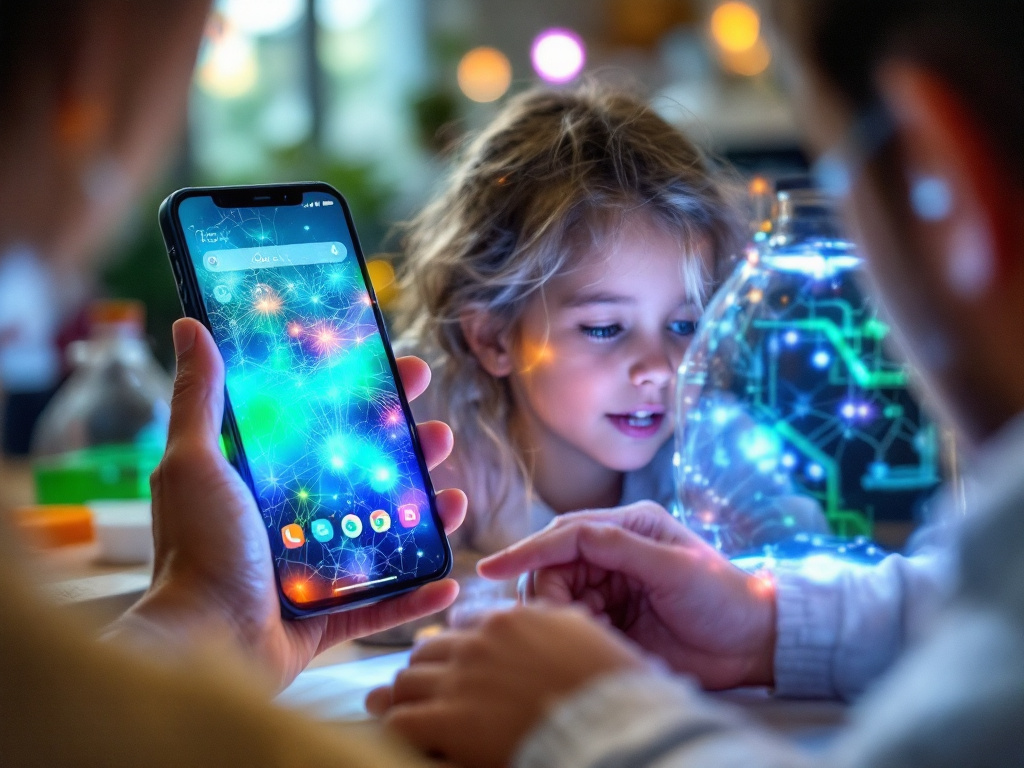Image generated by flux-ai.io & content generated by ChatGPT Version 4o-mini
Bringing Science to Life: How Mobile Tech is Changing Learning in Hamilton County
In today’s world, mobile technology is a powerful tool for education and communication. A recent scholarly article highlights how mobile devices like smartphones and tablets can engage audiences in exciting and accessible ways. This is especially relevant for residents of Hamilton County, Florida, where education and connection are vital for our community’s growth.
What’s the Buzz About Mobile Tech?
According to a study by Peyton Beattie and Jamie Loizzo, nearly 97% of Americans own a mobile phone, making these devices an ideal platform for sharing information. In Hamilton, where many families rely on their phones for everything from checking news to accessing educational content, this trend holds significant promise.
Mobile technology is widely used and affordable. Many people, especially younger generations, use their phones as their primary means of accessing the internet. This is crucial in a rural area like Hamilton, where high-speed internet may not always be available. Mobile tech allows residents to connect with educational resources, even from home or while on the go.
Engaging Hamilton’s Youth and Adults
The article discusses a project called Streaming Science, which encourages students to create educational content using mobile technology. This initiative can inspire local youth to develop skills in science, technology, engineering, and math (STEM) fields. Imagine local high school students working on projects about agriculture—like how to manage crops or improve soil health—using video, podcasts, or even virtual reality tours. This not only makes learning more engaging but also connects students with real-world applications, particularly in our county, where agriculture plays a significant role in the economy.
Hamilton County is home to around 275 farms that produce various crops, including vegetables. Having students involved in agricultural education through mobile tech can help them understand the importance of farming in our community. It encourages them to explore careers in agriculture and related fields, ensuring a bright future for the county’s economy.
How Can This Impact Our Community?
With mobile technology, educational opportunities can reach beyond the classroom. For instance, local farmers could use mobile apps to share best practices or connect with schools to provide virtual field trips. Imagine a class of Hamilton students taking a virtual tour of a local farm, learning about sustainable practices right from their classroom. This kind of hands-on learning can ignite passion and interest in science and agriculture among our youth.
Moreover, for adults in Hamilton, mobile technology offers a way to continue learning. Whether it’s through online workshops, podcasts about local history, or virtual cooking classes that highlight healthy eating, mobile tech can keep our community informed and engaged.
A Future of Possibilities
The findings from the Streaming Science project underline the potential of mobile technology to enhance education in Hamilton County. By leveraging these tools, we can create a more interconnected and informed community.
As we look ahead, being open to innovative learning methods can help bridge gaps in education and provide valuable resources to all residents. With the right guidance and support, Hamilton County can embrace this wave of mobile technology, ensuring our community not only keeps pace with the rest of the world but thrives in it.
For more information on how to get involved with mobile tech initiatives in education, residents can check local resources or contact education officials who may be collaborating on projects like Streaming Science. The future is bright, and with mobile technology, learning can truly be at our fingertips.
References
AEC736/WC397: Streaming Science #1: An Introduction to Using Mobile Technologies for Engagement with Your Target Audience. (n.d.). Ask IFAS – Powered by EDIS. https://edis.ifas.ufl.edu/publication/WC397



